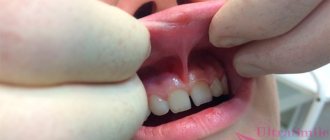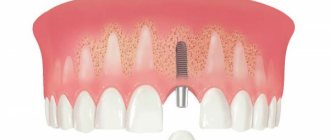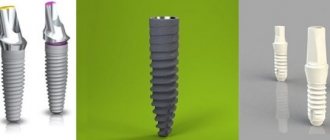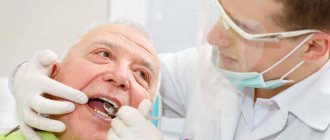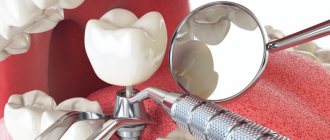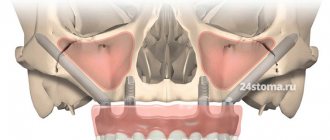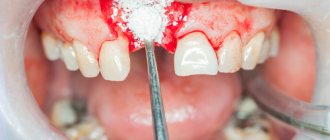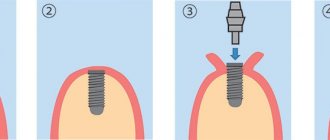Today, the attitude towards implantation has become simpler than it was ten years ago. However, the insufficient bone volume for implant placement, which requires bone grafting, changes everything. Many patients categorically refuse additional surgery, preferring other prosthetic methods. However, some techniques make it possible to do without bone grafting even in the most difficult cases. The chief physician and leading specialist of the Professorial Dentistry “22nd Century” in Moscow Arkady Aleksandrovich Snitkovsky talks in more detail about such methods.
Is implantation possible without bone grafting?
Today, there are the latest foreign developments in this area - implantation according to the Frankfurt protocol in the complete absence of teeth, as well as special implants that can be used without first replenishing the volume of the jaw bone in 90% of cases. When a patient has narrow bone, a splitting technique can be used to allow the implant procedure to be performed without bone grafting. Thanks to this technique, the patient receives a finished prosthesis within 3-4 months. While with classical implantation technology with preliminary surgery to increase bone volume, tooth restoration is often delayed for 10–12 months. Thus, the splitting technique avoids invasive procedures such as transplantation of bone blocks taken from other parts of the jaw. In addition, there will be no need for subsequent correction of soft tissues, which is necessary after bone grafting, as a result of which the gum is greatly stretched, which often leads to exposure of the transplanted bone block or implant.
Types of bone atrophy in the upper and lower jaw
Destruction of the bone structure of the upper jaw is fraught with injury to the closely localized maxillary sinus. The cells in this area have a loose structure, the bone is thinner, and is actively resorbed in the area of the masticatory elements. When fixing long implants, there is a risk of injury to the sinus membrane, which can stimulate its rupture and the development of sinusitis or chronic runny nose.
The Schroeder classification identifies three types of atrophy of the upper jaws
:
- The jaw tubercles are pronounced, physical abnormalities are not visible, the mucosa is noticeably curved, the palate is deep. Implantation is possible without complications.
- The alveolar processes are not clearly expressed, the palate is of medium depth. Installing implants using the classical method is doubtful, but using a one-stage method is possible.
- The cells are seriously atrophied, the alveolar processes are smooth, the palate is flat, the fold at the level of the palate does not hold its shape. Fixation of classical implants is not possible; it can be done in one stage, depending on the location of the defect.
The tissue of the lower jaw is dense from below and does not decrease so rapidly, but as atrophy progresses, the dentist is faced with the problem of the nearby localized mandibular nerve (it is located under the roots of natural elements). Nerve injury can cause complete or partial loss of sensation in the lower facial part.
According to Keller, there are four types of mandibular atrophy
:
- The tubercles of the alveoli are visible on the jaw, a fold of the mucous membrane is noticeable. You can install classic or one-stage implants.
- The ridge becomes sharper, and muscles are attached at its base. Installation of a classic implant may cause discomfort, but a one-stage implant does not cause complications.
- The jaw of patients with early removed lateral teeth - the alveoli are thinned, the volume in the center does not decrease. It is not possible to implant classical artificial roots; one-stage ones are possible, but there is a fear of the implant shifting when chewing food in case of a single defect.
- In the area of the frontal incisors, the bone is clearly atrophied; the lateral row is not affected. Implantation for such bone tissue atrophy is possible using a combined method.
Installation of an implant using the splitting technique
Using a special instrument whose action is based on microvibration (somewhat reminiscent of the effect of ultrasound on tartar), the doctor carefully and non-traumatically makes a small incision in the bone. A special screw implant is installed in it, designed in such a way that it itself splits the bone ridge and increases the total volume of the bone. Unlike surgery using bone blocks, in this situation, specialists perform only one procedure. When plastic surgery with bone blocks is required, at least three operations are required: taking a bone block and transplanting it onto a narrow bone ridge, after 6-8 months - installation of implants, and also after another 3-4 months - gum plastic surgery, which, in turn, will continue to heal 2 months. Splitting the bone during implantation often makes it possible to avoid these lengthy procedures.
What do all these numbers say?
In order for the Eniridge implant to perform the same function as a conventional implant of the recommended diameter and length, only 4-5 mm of bone in height is sufficient. A conventional implant requires at least 10 mm in height to avoid the need for bone grafting.
In the lower jaw, this is also relevant and allows you to get rid of removable dentures even in cases where the patient was rejected everywhere due to severe bone atrophy.
Thus, having the new generation Eniridge implants in our arsenal, we can carry out implantation without bone grafting, while obtaining the same reliability and durability as with the classical technique using conventional implants and bone grafting.
It is also economically beneficial. The cost of a sinus lift is usually higher than the cost of implantation. Basically, the price of a sinus lift in Moscow ranges from 30,000 to 40,000 rubles. Plus the cost of dental implantation itself is from 15 to 40 thousand rubles. Thus, to install an implant with a sinus lift, you need to pay a minimum of 45 thousand rubles (with the installation of the cheapest implant), and on average the price of implantation with a sinus lift is 60-70 thousand rubles. In the case of Eniridge implantation, the cost averages 40-50 thousand rubles, while you receive a new-generation implant with a surface of calcium ions that accelerate healing, with a reliable conical connection that ensures reliable fixation of the crown and with a lifetime warranty from the manufacturer. You can read more about Eniridge implants here.
An example of successful Eniridge implantation without sinus lift: the patient is 76 years old, there are contraindications for major surgical operations. The Eniridge implant was installed in 10 minutes. After 3 months, a permanent crown was fixed to the implant, which has been serving for more than 5 years and will continue to serve.
Features of implants
When implanting using the splitting method, screw implants of a special design are used. They have a cone-shaped body, thanks to which they easily enter the bone, pushing its edges apart, like a wedge. However, the wedge is easy to knock out, so the conical shape of the implant is combined with a cylindrical thread profile, which allows it to be firmly fixed in the bone tissue. This unique feature of such implants gives doctors the opportunity to install them in narrow bones without undergoing bone grafting. They smoothly screw into the gap between the bone walls through a hole measuring only 2 millimeters and do not damage them. In addition, the sharp thread of the screw implants and the wide spaces between the turns of the spiral, through which bone tissue quickly grows, contribute to faster stabilization. Thus, after three, maximum four months, permanent crowns can be installed.
How to determine the possibility of implantation without osteoplasty
The decision is made exclusively by the dental surgeon after computer diagnostics
In our Center, it is carried out on a detailed 3D tomograph SIEMENS SIRONA GALILEOS of high accuracy with a minimum level of radiation . Allows you to obtain ideal and reliable diagnostic results with a minimum of x-ray load. When making a decision, the following are taken into account:
- dimensions of your own bone in height and width;
- bone density and structure;
- location of the maxillary sinuses and mandibular nerve.
If the parameters allow us to use one of the possible methods without bone augmentation, we will be happy to take this chance.
A lifetime guarantee is provided for dental implantation in our Center.
This means that we do not have the right to risk your health and must perform the operation in such a way that you will forever forget about the problem with which you came to us.
Levin Dmitry Valerievich Chief physician and founder of the Doctor Levin center
We will never prescribe additional surgery for you if it is not necessary, but if implantation is dangerous and involves risks, let us make a decision based on your individual parameters.
How many lost teeth can be restored this way?
The technique makes it possible to restore any number of lost teeth. Even when implanting one tooth, technology allows an incision to be made in such a way as to insert the implant into the bone without damaging the adjacent teeth. But most often, a narrow bone occurs in the absence of a large number of teeth, so specialists usually install two to four implants on each side.
Make an appointment
right now!
Snitkovsky Arkady Alexandrovich
Therapist, Orthopedist
Warranty periods for implants with large threads
Each manufacturer sets its own deadlines for implants for implantation without bone grafting, since they do not have any defects or flaws. Therefore, when used carefully, the products do not crack, break or undergo deformation. There are no guarantees for the successful engraftment of implants in the bone mass, since the quality of the engraftment process is determined by the state of health of the person himself. Therefore, the patient must scrupulously follow all medical recommendations regarding oral hygiene after any type of implantation, as well as be as careful as possible about their health. Only in this case will the artificial root be permanently fixed in its place and not be rejected.
Is implantation always possible without bone tissue augmentation?
Typically, the jawbone is oval in shape. Then, during the process of atrophy, only its upper part on the buccal (front) side loses volume, while its base remains wide and supports the rest of the bone. In this case, we can safely carry out “splitting” and not be afraid that the bone will break. However, if the ridge lacks thickness along its entire length, or is less than two millimeters, bone grafting is necessary. True, such situations are quite rare, and in these cases doctors are forced to follow the classic path - performing plastic surgery using bone blocks.
Differences between express dental implantation methods –
So which method of express dental implantation is better to choose? In this case, everything will depend on your budget, and what is very important – the volume of bone tissue in the implantation area. We will once again show you x-rays in which you can see a comparison of the basal technique and the “All-on-4” (Fig. 11). And as you will see below, the number of implants actually matters because... “All-on-4”, in our opinion and the experience of many of our colleagues, still cannot be recommended for the vast majority of patients with complete absence of teeth in the jaw.
In what cases is it better to do basal implantation?
1) One of the most important differences between basal implantation is that, if desired, you can immediately receive a permanent fixed prosthesis. For the All-on-4 technique, this option is excluded, and in any case, you will be forced to first make a temporary (adaptation) fixed denture, which will subsequently need to be replaced with a permanent one. But the basal implantation technique gives the patient a choice.
Those. you can still choose two-stage prosthetics, which will allow you to save on the first stage (in this case, you will first pay only from 250,000 to 320,000 rubles - depending on the cement or screw type of prosthesis fixation), but you will only receive a temporary fixed prosthesis . And at the second stage, you will have to pay about another 250,000 to 320,000 rubles for a fixed permanent prosthesis (also depending on the type of fixation). Or the second option - for 580,000 rubles you can immediately get a permanent fixed prosthesis with a titanium frame and screw fixation.
The only clarification is that there is also such a technique as All-on-3, which translates as “all on three implants.” This technique is performed only on the lower jaw, and it means that your fixed denture will be supported by only 3 dental implants. So, with this method, you will also immediately be given a permanent fixed denture (but for “All-on-4” or “All-on-6” this is impossible).
2) If there is a very thin alveolar ridge in the lower jaw, it will probably also be better to choose basal implantation. The fact is that a big problem for patients with complete absence of teeth and long-term experience of wearing removable dentures is the thinning of the alveolar ridge of the lower jaw (24stoma.ru). Ideally, complete dental implantation on the jaw is carried out with an alveolar ridge width of 5.0 mm or more, but very often patients come with a ridge thickness of 4.0 or 3.5 mm, and sometimes even 2.5 mm. What to do in such a situation when patients are clearly aimed at dental implantation without bone grafting?
If we are talking about the All-on-4 technique, then Nobel Biocare has developed its implants (“Nobel Speedy Groovy” and “Nobel Parallel CC”) in such a way that they have the so-called Split effect. Those. in this case, the bone bed is prepared incompletely (only for the pilot drill), and when screwing the implant into the dense layers of the bone, the implant seems to push the bone apart, i.e. expansion of the alveolar ridge occurs. But this effect has its own resource, which is not infinite, and of course, with the width of the alveolar ridge less than 5.0 mm, the risks of an unsuccessful All-on-4 operation gradually increase, and the smaller the width of the alveolar ridge, the higher the risk.
Basal implants, in turn, are thinner (compared to classic implants used with All-on-4), but their number is greater, which allows them to adequately bear the chewing load. Thinner basal implants can be installed in a thin alveolar ridge - even with a width of 3.5 mm or less (minimum width - 2.5 mm). If you make All-on-4 with such a ridge width, there is already too high a risk of structural failure in the future.
3) With basal implantation, the patient has from 9 to 12 implants installed along the entire length of the jaw, which makes it possible to do without overhanging consoles in the prosthesis. And this is very important! For example, with All-on-4, the installation of four implants is carried out in the teeth position 5-2|2-5, which automatically means that the sixth chewing teeth in the prosthesis will be made in the form of overhanging consoles. In turn, this increases the load on the lateral implants and can very likely lead to their overload and rejection. Therefore, All-on-4 cannot be done on all patients, but only on patients with a small jaw size, who do not have well-defined chewing muscles and who do not consume hard foods.
For all men under 50-55 years old, as well as patients with large jaws, well-defined masticatory muscles, with a dietary addiction to meat, as well as patients for whom, due to the relationship of the jaws, we will be obliged to add 7th teeth in the prosthesis - we simply are required to do either basal implantation or All-on-6 (i.e. when the prosthesis will be fixed not on 4, but on 6 implants). But on the other hand, if the cost of basal implantation and All-on-4 are almost identical, then All-on-6 will cost us about 150,000 rubles more.
4) Trauma and duration of the operation - installation of basal implants is usually carried out using a flapless technique, i.e. During the operation, it is usually not necessary to lift the mucoperiosteal flaps away from the bone, thus exposing the surface of the jaw bone tissue. This reduces the trauma of the operation, speeds up healing, and makes it possible to recommend this technique even to very old patients, as well as patients with osteoporosis and diabetes.
But the “All-on-4” and “All-on-6” techniques are low in trauma only when using a special individual surgical template (for example, Nobel-Guide), but the production of such an individual template will cost additional money. If the installation of implants using these methods is carried out without an individual surgical template, then a wide detachment of mucoperiosteal flaps is required, which several times increases the duration of the operation, its traumatic nature, and also the healing time.
5) An important point for smokers is that basal implants have a long polished neck, due to which the osseointegration zone (the zone of fusion of the implant and bone) is deeper from the surface of the mucous membrane than when using classic implants. Smoking has a very negative effect on the blood supply to the mucous membrane and surface layers of the bone, and therefore, if the zone of osseointegration of the implant begins immediately under the mucous membrane (as with classic implants), smoking negatively affects their healing and increases the risk of peri-implantitis and rejection.
In what cases is it better to make All-on-4 or All-on-6 –
In general, we will immediately say that if you choose only between “All-on-4” and “All-on-6” (not taking into account the basal implantation technique), then you should always choose the latter. An exception can be made for very old patients who do not have significant chewing activity, as well as patients with small jaws (usually small, fragile women) who do not have well-developed masticatory muscles, as well as bruxism.
Believe me, a prosthesis with 6 implants is generally much more reliable, even in terms of failure of one of the implants (in this case you will not lose the entire structure). In this case, after removing one of the implants, the prosthesis will fit perfectly on 5 implants, although it will require a slight correction in a dental laboratory. If your prosthesis is fixed on only 4 implants, then the loss of just 1 implant automatically leads to the need to install a new implant, as well as to the need to completely replace a fixed denture.
In general, the “All-on-4” and “All-on-6” techniques are quite predictable and reliable, and provide very high patient satisfaction if – 1) the doctor thoroughly follows the surgical and orthopedic implantation protocols, 2) the correct selection of patients is carried out for these techniques, 3) original components are used, for example, Nobell Biocare implants and multi-unit abutments, as well as original prosthetic options.
Not original prosthetic options... For example, instead of an original fixed titanium-polymer prosthesis (a prosthesis made of acrylic or ceramic composite with an individually milled titanium beam inside), they may offer you a prosthesis made of acrylic or ceramic composite with a beam made of “nickel chrome”, which is done for reducing the cost of prosthetics. The latter has a strength at least 5 times less than a beam made of titanium, which significantly increases the risk of breakage of such a prosthesis. And this is not the only example; we discuss prosthetics in more detail here.
Therefore, it is very important to follow the classic implantation and prosthetic protocols for “All-on-4” and “All-on-6”. These are not techniques where you can save on the quality of implants or the type of fixed denture. Although you can, of course, install Osstem or Straumann implants instead of the original Nobel Biocare implants, we recommend doing this only if you are planning “All-on-6”. For the “All-on-4” technique or if you have a thin alveolar process, it is still safer to use Nobel Biocare implants.
Dependence of the prognosis on bone volume - below we provide a table that shows the dependence of the prognosis of these methods on the patient’s bone volume. As we can see, a good prognosis occurs with a bone width of 5.0 mm and a bone height of 10 mm and above. That is, not only the width of the alveolar process of the upper or lower jaw is important, but also the height of the bone. It is the height of the bone that will determine what length of implants we can install, and this in turn is very important to prevent overloading of the implants during chewing.
For example, with the “All-on-4” technique, lateral implants should ideally be 18 mm long, but 15 mm is acceptable (this is a satisfactory indicator), the critically acceptable indicator is 13 mm, but this already threatens almost 100% complications. The lower the bone height, the shorter the implants we can install, and the higher the risk of overload and rejection of the lateral implants. The table below shows options for prognosis of implantation for different heights and widths of the patient’s bone.
Forecast of “All-on-4” and “All-on-6” results –
Do mini-implants and all-on-4 implants help avoid bone grafting?
Mini-implants can only be used as temporary structures or to fix a removable denture. If the prosthesis rests on such implants, they will be rejected. Therefore, when implanting all on four, standard size implants are used.
The All-on-4 or All-on-6 techniques allow you to place a permanent prosthesis on implants, most often with screw fixation. Only a very experienced doctor should install an orthopedic structure, since even a slight error in calculations can lead to improper distribution of the chewing load and cause implant rejection. With all-on-four implantation, implant placement can also be done using the splitting method. This is a simple and effective procedure that is absolutely safe for the patient and avoids bone tissue buildup.
Why you shouldn't be afraid of the procedure
Some patients refuse to have implants installed if, based on the results of a preliminary examination, they are told that they cannot do without bone augmentation. The main reasons are myths that are based on fears, lack of information, and studying incomprehensible publications on the Internet.
Myth 1. It's painful and scary
The anesthesia may not work, it will be painful, and there will be swelling after the operation.
- Causes of Pain during and after surgery are directly related to osteoplasty technologies. Traditional surgery using a hammer, chisel and other “punitive” instruments does require increased anesthesia during the operation and often causes pain and swelling afterward.
- Reality Our Center uses our own low-traumatic ultrasound protocol . Piezosurgery significantly reduces the trauma of the operation, the device delicately affects bone tissue, and turns off when approaching blood vessels, nerves, and the lining of the maxillary sinus. The operation in a state of medicated sleep using a combo protocol of sedatives and anesthetics eliminates pain and nervous tension. A rehabilitation complex, including microcurrent and PRP therapy, injections of lymphatic drainage drugs, completely relieves post-operative discomfort, including cosmetic discomfort.
Myth 2. It takes a long time
The implantation time will increase because you need to wait for the bone material to engraft.
- Causes Critical bone loss does require a two-step procedure. The operations are divided by time - first bone grafting and several months for the bone to mature enough to support the implant, only then implantation.
- Reality It is impossible to neglect this moment. But bone tissue augmentation and implantation can be carried out in one stage , if the volume of preserved bone allows it. New bone tissue will form simultaneously with the healing of the implant.
Myth 3. It's traumatic
It is necessary to take the bone for transplantation from another area of the jaw in order to transplant it to the implantation site.
- Reasons Indeed, there is a protocol when one’s own bone tissue is used as a material for grafting. It is necessary to further traumatize the patient and perform another operation to remove material from the area behind the wisdom teeth or chin.
- Reality This method is not used in modern dentistry and in our Center. We use biocompatible bone grafts and growth stimulants , which trigger processes that cause bone cells to grow and thicken. The new volume fuses with its own bone, forming a single mass.
Myth 4. It's unethical
Bone tissue from other people is used for transplantation.
- Reasons Yes, previously materials of allogeneic origin were used, which were sterilized and processed many times during the production process.
- Reality We do not use bone materials from other people , since it is impossible to track the degree of purification, the absence of proteins or genes of another person that act as allergens.
What if not only the thickness, but also the height of the bone is not enough?
In this case there are also several options. If the bone height is not enough in the lateral parts of the upper jaw, a sinus lift should be performed. If the bone height is at least 4 millimeters, we can increase the volume of bone tissue while simultaneously installing a high-quality implant. If it is less than 4 millimeters, then after sinus lift you will have to wait 5–7 months before implantation. But if the bone is wide and its height is 5-6 millimeters, then you can do without a sinus lift - here they use short implants with strongly protruding threads. Due to their large surface area, these short but wide implants can withstand the same load as conventional ones.
One-stage protocol with immediate loading
A one-stage operation is performed if 3 or more teeth are missing. The protocol helps avoid tissue buildup. Single-component (not divided into an abutment and an intraosseous part) implants are installed in the deep layers of bone, which are not subject to resorption. For a larger area of contact between the bone and the titanium root, the product is fixed at an angle, identifying areas of bone tissue that are less susceptible to atrophy.
The implant is implanted using a minimally invasive method: it is screwed through a puncture in the gum. The top of the artificial root (abutment) rises above the gum - the dentures are installed immediately after implantation (on 2-3 days). After a year, the lightweight adaptive prosthesis is replaced with a permanent one.
1
Implantation
Implantation of 8-12 implants into deep bone layers (without bone grafting)
2 - 3 days
2
Prosthetics
Fixation of an adaptive prosthesis with a titanium arch and metal-plastic crowns
in a year
Permanent prosthetics
One-stage dental implantation for abnormal bone deficiency (less than 2.5 mm) is impossible without tissue augmentation. The operation is not performed for large maxillary sinuses, which cannot be avoided when installing implants at an angle.
Among the complexes of the one-step protocol:
- All-on-4.
The technique is used if the patient is missing all the teeth on the jaw. The dentition is restored using 4 implants (2 in the smile area and 2 on the sides). To avoid complications, “all-on-4” implantation for atrophy of the bone tissue of the upper jaw is carried out with caution, taking into account the close location of the maxillary sinuses. - All-on-6.
A modernized version of the All-on-4 method (implantation for severe bone deficiency). The increased number of supports (6 instead of 4) expands the scope of application of the method and allows for more stable fixation of the structure. - Basal implantation.
The method is used for acute bone loss. Suitable for missing three or more teeth in a row. For complete edentia, 8-12 implants are used on one row of teeth. They are fixed into the deep layers of the jaw bone.
All-on-4 and all-on-6 protocols involve the use of surgical templates to determine the location of the implant, without taking into account the condition of the bone. With basal implantation, templates can be dispensed with; this expands the scope of application of the technique. Implantologists at the ROOTT Clinic, using computed tomography, select suitable jaw sites for fixation with sufficient bone volume. If circumstances require it, a couple of additional implants are installed free of charge - if one of the titanium roots does not take root, there are enough implants left for prosthetics.
What determines the healing time of implants?
It is known that classic root-shaped implants take root on the lower jaw within 3 months, and on the upper jaw within 5-6 months. The timing depends on the primary stabilization, that is, on how tightly the implant was fixed in the bone during its installation, and on the density of the bone. In hard bone, the implant receives good initial stabilization and can be loaded with a temporary crown after only 3 months. If the bone is soft, it is necessary to postpone prosthetics for a longer period, otherwise the implant may be rejected.
With the advent of an implant system with large threads, it became possible to speed up the healing time in soft bone, since it increases the area of contact between the implant surface and bone tissue, and therefore contributes to more durable stabilization. In both soft and hard bone, the healing time of such an implant is about 3 months.
In what cases is bone augmentation necessary?
Refusal of bone grafting in some situations does not guarantee the success of implantation
Osteoplasty cannot be avoided if:
- extreme bone deficiency in height and/or width;
- advanced stages of periodontitis with loss of bone tissue.
Implantation in such cases can lead to serious complications:
- perforation of the maxillary sinus in the upper jaw with the development of an inflammatory process and odontogenic sinusitis
- damage to the jaw nerve of the lower jaw with numbness of the lip and lower face
- displacement and, as a result, rejection of the implant with inflammation of surrounding tissues
Cost of the procedure
The price of the procedure consists of the cost of the implant, the doctor’s work, as well as the cost of temporary and permanent prosthetics. Due to the fact that specialists do not perform bone grafting, the price of implantation, of course, decreases, but not much. This technique was created not to save on implant installation, but to avoid additional surgery in cases where this is possible.
For example, if the bone volume is sufficient and its condition is ideal, you can install any modern implant - it will take root and function for a long time. But if it is necessary to carry out a sinus lift simultaneously with implantation, it will be necessary to use implants that are fixed even in 1-2 millimeters of bone. But if the bone is narrow, the best option would be to use the splitting technique followed by installation of an implant with a wide thread. Everything is fair here - the doctor does not focus on your wallet, but advises and selects the most optimal treatment plan in accordance with the specific clinical situation.
Publisher: Expert magazine about dentistry Startsmile.ru
Clinical cases when osteoplasty is indispensable:
- There are 2 or more units of teeth missing nearby and very severe atrophy of bone tissue is observed in height or width, or in two dimensions at the same time.
- Severely aggravated periodontitis.
- If there is a deficiency of bone tissue in the area of the maxillary sinuses, preference should be given to sinus lifting.
- If a tooth is damaged as a result of trauma, without restoring bone tissue it is impossible to obtain high-quality aesthetics of the gingival contour.
All cases must be carefully analyzed by specialists in order to eliminate all risks as much as possible.
Despite the seemingly obvious advantages of implantation without bone augmentation, in each individual case a preliminary thorough diagnosis, 3D planning and modeling of the future result of prosthetics with a load on the implanted implants are carried out.
In clinics with high quality treatment, the primary task of doctors is to carry out treatment in such a way that the patient does not return to “rework”, but fully enjoys full teeth for as long as possible. When you have decided on the choice of clinic and specialists for implantation and prosthetics, the only option for successful treatment will be complete trust in the specialists.
For more information and to make an appointment with a specialist, call:
+7,
or use the feedback form Sign up for a consultation and we will call you.
In our center, with a thorough assessment of physiological capabilities, more than one treatment plan will be proposed. Depending on your preferences and capabilities, you almost always have a choice. The specialists of the Es-Dent dental center daily perform operations to install implants and perform bone grafting in different volumes and levels of complexity.
Taking into account the clinical picture of each patient, focusing on high-quality long-term results, we always offer the optimal treatment option. If bone grafting can be avoided before installing implants, then all factors will be taken into account and the implantation will be guaranteed to be successful.
Methods for restoring teeth during atrophy
There are two main methods of combating bone tissue atrophy: classical and basal implantation. Implantation in general allows you to “load” the bone tissue by fixing implants in it - this is a more natural process for the body, since the implant replaces the root of the tooth and performs all the same functions.
- Dental implantation with delayed loading allows you to restore lost teeth in the amount of one to the entire dentition. But an important feature is that there is not enough bone to fix the implant or the bone is very weak, so it requires preliminary augmentation by transplanting donor bone or synthetic materials - sinus lifting or osteoplasty. After growing the bone, you need to wait until it takes root. Only after this can the doctor install the implant according to the classical protocol. The implant, in turn, fuses with the bone for up to 6 months and only then permanent crowns are installed. Thus, in the case of classical implantation, the process of tooth restoration can take up to 1.5 years.
- Dental implantation with immediate load , a revolutionary technique developed in Switzerland, allows you to restore teeth without building up bone tissue. For this method, special designs from the ROOTT BAZAL line of implants are used, individually selected for patients with acute bone tissue atrophy. Implants are installed simultaneously (by puncture) and immediately with an abutment (the protruding part of the implant on which the prosthesis is installed). Depending on the condition of the bone (its volume and sparseness), implants are selected that have a special fastening and structure for better fixation in the tissue. In addition, in areas of severe atrophy, additional implants can be installed at an angle in adjacent areas where there is enough bone to provide maximum stability to the structure, able to withstand heavy loads and not become loose. On the third day after installation of the implants, a metal-plastic prosthesis is installed. This is the final part of the structure, which provides the patient with the ability to chew with new teeth within a week. The essence of the immediate load implantation method is to provide patients with the opportunity to chew, so that the natural processes of bone tissue regeneration are stimulated during the chewing process. Thanks to this technology, it was possible to achieve not only an aesthetic effect immediately after installation of implants, but also to reduce the implantation time by tens of times.



